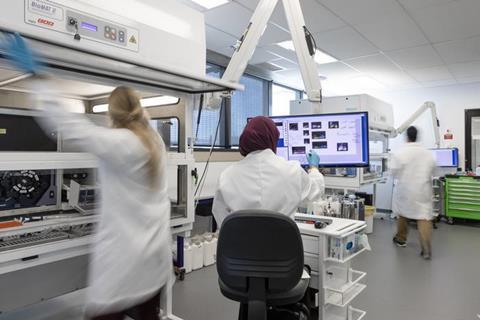Scientists at the Garvan Institute of Medical Research have discovered how a viral infection causes autoimmune disease, disproving a long-standing theory and opening a promising new approach to developing treatments for autoimmune conditions.

The research, published today in the journal Immunity, focuses on hepatitis C virus (HCV) – which affects an estimated 58 million people worldwide – and its role in triggering a serious autoimmune disease called cryoglobulinemic vasculitis in up to 15% of cases, where antibodies attack blood vessels and can damage organs throughout the body.
Until now, scientists believed this autoimmune response occurred because viral proteins mimicked the body’s own proteins, confusing the immune system into attacking both. The Garvan team revealed that this is not the case – rather, the critical trigger is mutations in ‘rogue clone’ B cells.
“This discovery fundamentally changes our understanding of how infections can cause autoimmune conditions,” says Professor Chris Goodnow, Head of the Immunogenomics Lab at Garvan and the study’s co-senior author. “By pinpointing these rogue clones, we can better understand how to target them, which is a potentially transformative approach to treating autoimmune disease in patients.”
Perfect storm’ of mutations
Using sophisticated single-cell analysis techniques and whole genome sequencing, the researchers analysed the immune cells in the blood of four patients with HCV-triggered cryoglobulinemic vasculitis. They identified the specific rogue clone B cells that were present in large numbers and produced harmful autoantibodies.
READ MORE: Epstein-Barr Virus and brain cross-reactivity: possible mechanism for multiple sclerosis unveiled
READ MORE: Hepatitis C leaves ‘scars’ in immune cells even after successful treatment
“The long-standing theory is that B cells trained to recognise the foreign virus become confused and target the body instead – a phenomenon referred to as molecular mimicry. What our study showed was that during a chronic hepatitis C infection, antibodies on the virus surface form an antibody cluster that persistently stimulates the B cells to mutate,” explains lead author Dr Clara Young. “This continual mutation, we found, eventually leads to development of the rogue clones that cause cryoglobulinemic vasculitis.”
“Our research shows that three types of genetic mutations are required for the autoimmune disease to develop,” adds Dr Dan Suan, co-senior author and Clinical Director of the Hope Research Program at Garvan. “Two of these mutations occur normally in B cells, but the presence of chronic viral particles that can’t be cleared creates ongoing stimulation. The third mutation, linked to the development of blood cancers, occurs by chance over time. This perfect storm of mutations allows the cells to accumulate in large enough numbers to cause the autoimmune disease.”
New pathways
“This research opens up new possibilities for predicting and preventing autoimmune complications,” says Professor Goodnow. “By understanding this structural mechanism, we can potentially develop targeted therapies that prevent these antibody formations from triggering autoimmune responses.”
“While we’ve focused on HCV, these findings have broader implications for predicting and preventing autoimmune complications,” says Dr Young. The insights are relevant to other infection-associated autoimmune conditions, such as Guillain-Barré syndrome and multiple sclerosis, which are also linked to other bacterial and viral infections.
“Mutations occur in B cells as part of their normal development, and understanding how they can drive autoimmunity is a significant step forward in our mission to eliminate the root cause of autoimmune disease rather than just managing symptoms,” says Dr Suan.







No comments yet